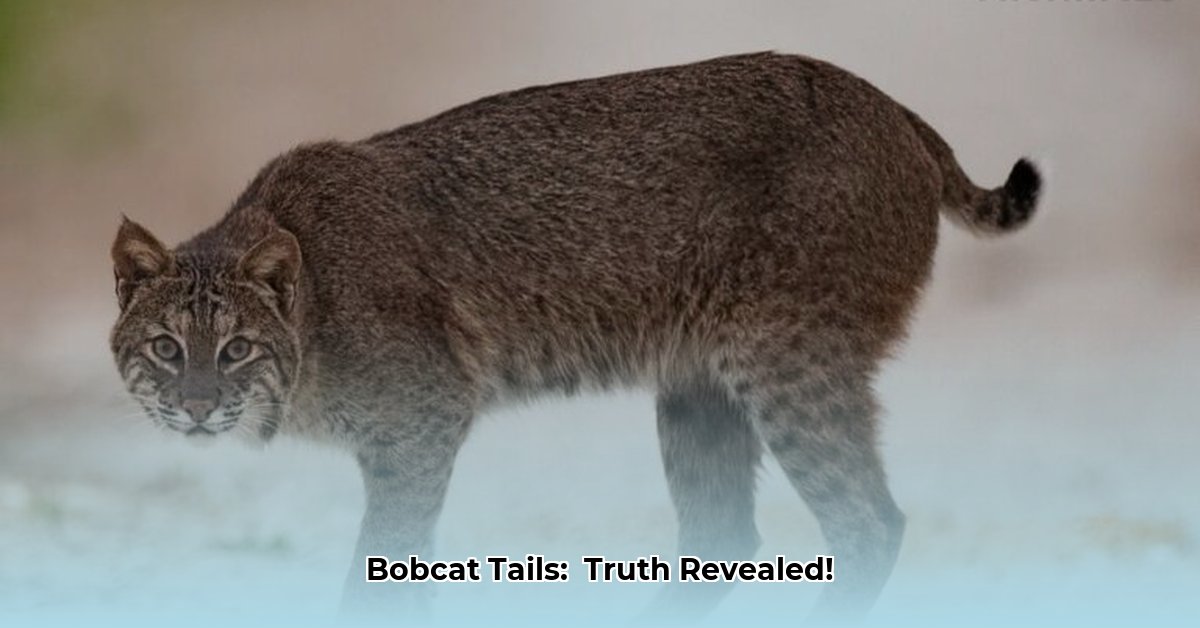There’s a persistent misconception that bobcats can have long tails. It’s time to debunk this myth and clarify what’s really going on with these fascinating felines’ tails.
The Truth About Bobcat Tails
The very name “bobcat” hints at its most distinctive feature: a short, “bobbed” tail. Typically measuring a mere 3.5 to 8 inches (approximately 9-20 cm), a bobcat’s tail is much shorter than many people realize. This stubby appendage is a key characteristic of the Lynx genus, to which bobcats belong.
Bobcat vs. Lynx: A Tail of Two Tails
Comparing a bobcat’s tail to that of its close relative, the Canada lynx, illustrates the difference. While also considered short, a lynx’s tail (2-5.5 inches, approximately 5-14 cm) is generally shorter and proportionately smaller than a bobcat’s and has wholly black tip, in contrast to the bobcat’s black-tipped top and white underside . This distinction highlights the bobcat’s comparatively longer, more prominent tail. Here’s a handy visual comparison:
| Feature | Bobcat | Canada Lynx |
|---|---|---|
| Tail Length | 3.5-8 inches (9-20cm) | 2-5.5 inches (5-14 cm) |
| Tail Appearance | Black-tipped (top), white (underside), may have faint bars | Completely black-tipped, usually no bars |
Bobcat Tail (left) and Lynx Tail (right): Note the difference in the length and the distinct markings.
Why So Short? Theories and Ongoing Research
Why did bobcats evolve with a short tail while some other felines sport much longer ones? Several theories exist:
- Maneuverability: A short tail likely offers better agility in dense vegetation, preventing snags and allowing for quieter movement while stalking prey.
- Balance and Stability: A shorter tail may contribute to balance during quick turns and pounces, although more research is needed to confirm this.
- Communication: There is speculation that the short tail could play a role in intraspecies communication, though this area requires further study.
- Genetic Factors: Some researchers believe tail length is linked to specific genes and may be a neutral trait neither hindering nor helping the bobcat.
The precise evolutionary advantage of a short tail remains a topic of ongoing research.
Mistaken Identity: When “Bobcats” Have Long Tails
If you’re convinced you saw a bobcat with a long tail, you probably saw a different animal entirely. Here are some common culprits:
- Maine Coon Cats: These large domestic cats have bushy tails, ear tufts, and markings that resemble a bobcat.
- Young Mountain Lions (Cougars/Pumas): Adolescent mountain lions can be mistaken for bobcats, but their tails are significantly longer and lack the distinct black and white tip.
- Domestic Long-Haired Cats: Even ordinary house cats can sometimes fuel the long-tailed bobcat myth, especially if seen fleetingly or from a distance.
Bobcat Tail Variations: A Touch of Individuality
While bobcats typically have short tails, individual variation exists within any species. Some bobcats may naturally have slightly shorter or longer tails than the average 3.5-8 inch range. However, a dramatically longer tail strongly suggests misidentification.
Conclusion: Setting the Record Straight
Bobcats have short tails. Sightings of “long-tailed bobcats” are almost always misidentifications of other animals. By understanding the typical bobcat tail length, the reasons for the misconception, and the characteristics of similar-looking animals, you can become a more informed observer of the natural world.
- Wind Turbine Generator Kit For Home: Is One Right For You? - November 2, 2025
- Wind Turbine Fire: Questions About Safety Spark Debate - October 31, 2025
- Vertical Axis Wind Turbine Design: Improving Efficiency and Overcoming Limits - October 29, 2025
















